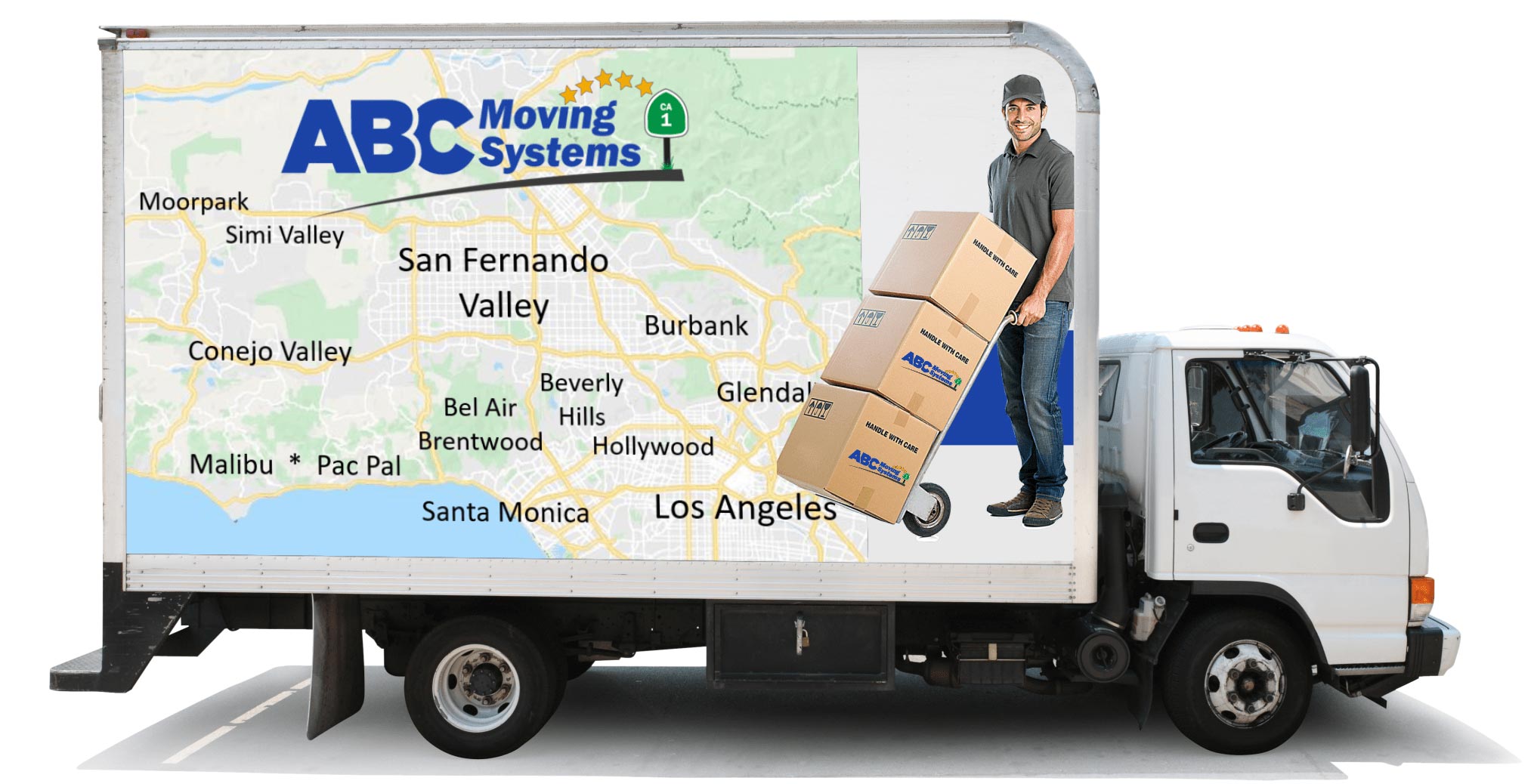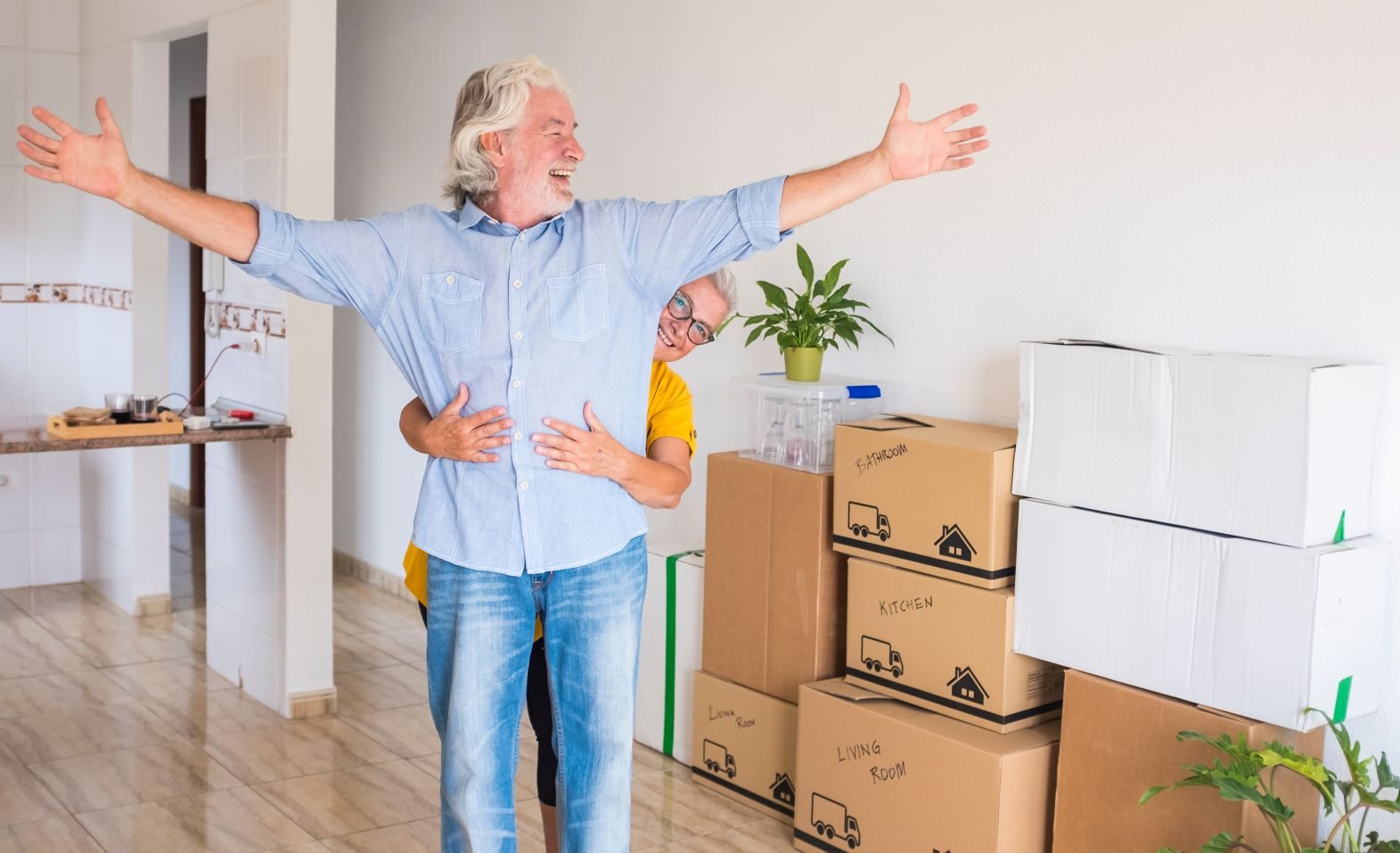
Tips For Moving With Seniors
Moving can be a stressful experience for anyone, but it can be especially challenging for seniors. They may have difficulty packing their belongings, understanding the logistics of the move, and adjusting to a new environment. Here are some tips for moving with seniors to make the moving process easier for seniors:
Start early:
Moving with seniors requires careful planning and starting early is essential for a smooth and stress-free transition. Begin by initiating conversations with your senior loved ones well in advance to understand their needs, concerns, and preferences regarding the move. Take the time to listen to their thoughts and involve them in the decision-making process to ensure they feel valued and empowered throughout the transition.

Early preparation allows for ample time to assess the living arrangements in the new home. If necessary, consider making modifications to ensure accessibility and safety for seniors. This may include installing grab bars, ramps, or handrails, as well as organizing furniture and belongings in a way that minimizes obstacles and promotes ease of movement.
Additionally, consider the layout and amenities of the new neighborhood, such as proximity to healthcare facilities, recreational areas, and public transportation, to ensure convenience and support for your senior loved ones.
By starting early, you can also manage the logistics of the move more effectively. These tips for moving with seniors include sorting and downsizing belongings, hiring professional movers or arranging for assistance, and coordinating with healthcare providers to ensure a smooth transition of medical records and care plans.
Create a customized moving plan:
When moving with seniors, creating a customized moving plan is crucial to address their unique needs and ensure a smooth transition.
- Start by conducting a thorough assessment of their current living situation, including the size of their home, the amount of belongings, and any specific requirements or limitations they may have. This will help you determine the scope of the move and develop a tailored plan accordingly.
- When creating the moving plan, take into account any necessary accommodations for the seniors’ physical limitations or medical conditions. This may involve scheduling breaks during the move to ensure rest and hydration, making arrangements for transportation that is accessible and comfortable, and considering any special equipment or assistance needed to facilitate the move.
- Additionally, consider the emotional well-being of the seniors during the move. Moving can be a challenging and emotional experience, particularly for older adults who may have strong attachments to their current home. Be patient, understanding, and provide ample support and reassurance throughout the process.
- Consider involving moving professionals who specialize in senior moves or relocation services. These experts can provide valuable guidance and assistance in creating a personalized moving plan. They can help with tasks such as sorting belongings, coordinating logistics, and providing emotional support throughout the process.
For over 30 years the experts at ABC Moving Systems have been moving seniors throughout Southern California. We can help you move your senior loved one with care and compassion.

Downsize and declutter:
Downsizing and decluttering are essential steps when moving with seniors as they often have accumulated a lifetime’s worth of possessions. Begin by having open and honest conversations with your senior loved ones about the importance of downsizing and the benefits it can bring. Encourage them to make decisions about what items to keep, donate, or discard, while being sensitive to their emotional attachments.

- When downsizing, focus on prioritizing items that hold sentimental value or are truly essential to their daily lives. Help seniors identify duplicates, unused or outdated items, and belongings they no longer need or have space for in their new home. Sorting through belongings category by category can make the process more manageable and less overwhelming.
- Support seniors in making decisions by offering guidance, providing practical assistance, and ensuring they feel empowered throughout the process. Encourage them to donate or gift items to family members, friends, or charitable organizations, which can bring a sense of joy and purpose to the downsizing process. Additionally, consider hiring professional organizers or estate sale services to help with the downsizing process, as their expertise can facilitate the task and make it less burdensome for seniors.
- Downsizing and decluttering not only help seniors create a more manageable living environment but also reduce the physical and emotional strain of the moving process. It allows them to focus on what truly matters and ensures that their new home is a comfortable and organized space.
Plan for accessibility and safety:
When moving with seniors, it is crucial to plan for accessibility and safety to ensure their well-being during the transition.
 Start by assessing the accessibility features of the new home. Consider factors such as entryways, staircases, door widths, and bathroom amenities to ensure they can easily navigate and use these spaces. If necessary, make modifications such as installing ramps, grab bars, or handrails to enhance safety and accessibility.
Start by assessing the accessibility features of the new home. Consider factors such as entryways, staircases, door widths, and bathroom amenities to ensure they can easily navigate and use these spaces. If necessary, make modifications such as installing ramps, grab bars, or handrails to enhance safety and accessibility.
Additionally, consider the layout and organization of the new home. Plan the placement of furniture and belongings in a way that minimizes hazards and promotes easy movement. Keep pathways clear of clutter and ensure that frequently used items are within reach. Make sure there is adequate lighting throughout the home, including hallways, staircases, and entryways, to prevent falls and accidents.
It is also important to involve healthcare professionals in the planning process. Consult with their primary care provider or specialists to discuss any specific medical needs or considerations during the move. Ensure that necessary medical equipment, medications, and supplies are readily available and properly organized. If applicable, coordinate with home healthcare services or arrange for in-home assistance to provide support and care during and after the move.
By proactively planning for accessibility and safety you can create a comfortable and secure environment for seniors during the move. These tips for moving with seniors not only minimize the risk of accidents or injuries but also promotes their overall well-being and helps them adapt to their new home with ease.
Pack essentials separately:
When moving with seniors, it is important to prioritize packing their essential items separately to ensure their immediate needs are met upon arrival at the new home.
- Begin by identifying the essential items that seniors will require in the first few days after the move. This may include medications, toiletries, changes of clothes, important documents, personal care items, and any medical equipment or aids they rely on.
 Pack these essential items in a separate box or bag that is easily accessible and clearly labeled. Keep this box with you during the move rather than loading it onto the moving truck, ensuring that it remains within reach when you arrive at the new home. This way, seniors can have immediate access to the items they need without having to search through multiple boxes or wait for the moving process to be completed.
Pack these essential items in a separate box or bag that is easily accessible and clearly labeled. Keep this box with you during the move rather than loading it onto the moving truck, ensuring that it remains within reach when you arrive at the new home. This way, seniors can have immediate access to the items they need without having to search through multiple boxes or wait for the moving process to be completed.- By packing seniors’ essential items separately, you can minimize stress and ensure their comfort and well-being during the transition. It provides a sense of security and familiarity, knowing that their immediate needs are taken care of upon arrival at the new home.
- Additionally, having their essential items easily accessible can help seniors feel more at ease and adjust more smoothly to their new surroundings.
Coordinate utilities and services:
- Coordinating utilities and services is an important aspect of moving with seniors to ensure a seamless transition and their comfort in the new home. Start by contacting utility providers well in advance to arrange for the transfer or installation of essential services such as electricity, water, gas, and internet. Provide them with the move-in date and address to schedule the necessary connections or transfers to avoid any disruptions in service.
- In addition to basic utilities, consider coordinating other important services that are essential for seniors. This may include notifying healthcare providers, such as doctors and specialists, about the move and ensuring the seamless transfer of medical records and prescriptions to the new location. Contact local home care agencies or caregivers to discuss any ongoing services needed and make necessary arrangements for their support in the new home.
- It is also important to update the address and contact information with relevant organizations and agencies. Notify insurance providers, banks, credit card companies, and other financial institutions of the change in address to ensure the continuity of services and timely delivery of important documents. Inform the post office of the address change to have mail forwarded to the new location.
- By coordinating utilities and services in advance, ABC Moving it is a good practice to help ensure that seniors have a smooth transition and uninterrupted access to essential resources in their new home. these tips for moving with seniors allows for a seamless transfer of important services and provides seniors with a sense of security and familiarity as they settle into their new living environment.
Provide emotional support:
Providing emotional support for seniors during a move is crucial as it can be a challenging and overwhelming experience for them. Recognize that moving can bring about a mix of emotions, including nostalgia, anxiety, and sadness about leaving behind familiar surroundings. Be empathetic and understanding, allowing seniors to express their feelings and concerns openly.
Maintain open communication throughout the moving process, keeping seniors informed about the details and progress. Involve them in decision-making whenever possible, allowing them to have a sense of control and involvement in the process. Listen actively to their thoughts and concerns, and validate their emotions. Offer reassurance and comfort, emphasizing the positive aspects of the move and highlighting the opportunities and new experiences that await them in the new home.
Engage seniors in the planning and preparation process, seeking their input on how they would like their new living space to be arranged or decorated. Encourage them to reminisce and share memories of their current home while also expressing excitement for the future. Help them create a sense of familiarity in the new home by unpacking cherished belongings and arranging them in a way that evokes a sense of comfort and continuity.
Above all, be patient and understanding as seniors adjust to the new surroundings. Offer your support, both physically and emotionally, during the unpacking and settling-in period. Spend quality time with them, exploring the neighborhood and engaging in activities that they enjoy.
By following these tips for moving with seniors and providing emotional support, ABC Moving knows that you can help seniors navigate the emotional challenges of the move and foster a positive and smooth transition to their new home. AARP, or the American Association of Retired Persons, is a great provider of services and information for seniors in need of moving tips.
Summary of Moving Tips for a Smooth Transition With Seniors:
Moving with seniors requires careful planning and consideration to ensure a smooth transition and their well-being. Here are some key tips for a successful move:
Start early: Begin the moving process well in advance to allow sufficient time for planning, organizing, and addressing any specific needs of seniors. Starting early will help minimize stress and ensure a more seamless transition.
Communicate and involve seniors: Keep open lines of communication with seniors throughout the moving process. Involve them in decision-making, listen to their concerns, and address any anxieties they may have. By actively involving seniors, you can empower them and make them feel more comfortable with the upcoming change.
Prioritize safety and accessibility: Plan for accessibility and safety in the new home. Consider any modifications or accomodations needed to ensure that seniors can navigate their new living environment comfortably and safely.
Downsize and declutter: Help seniors downsize their belongings by sorting through items and letting go of unnecessary or unused possessions. This will not only make the move more manageable but also create a more organized and clutter-free living space.
Provide emotional support: Moving can be an emotional experience for seniors. Offer empathy, understanding, and emotional support throughout the process. Encourage them to share their feelings and provide reassurance and comfort during the transition.
By following these tips for moving with seniors, you can help make the moving process with seniors as smooth and stress-free as possible, ensuring a positive start in their new home.



